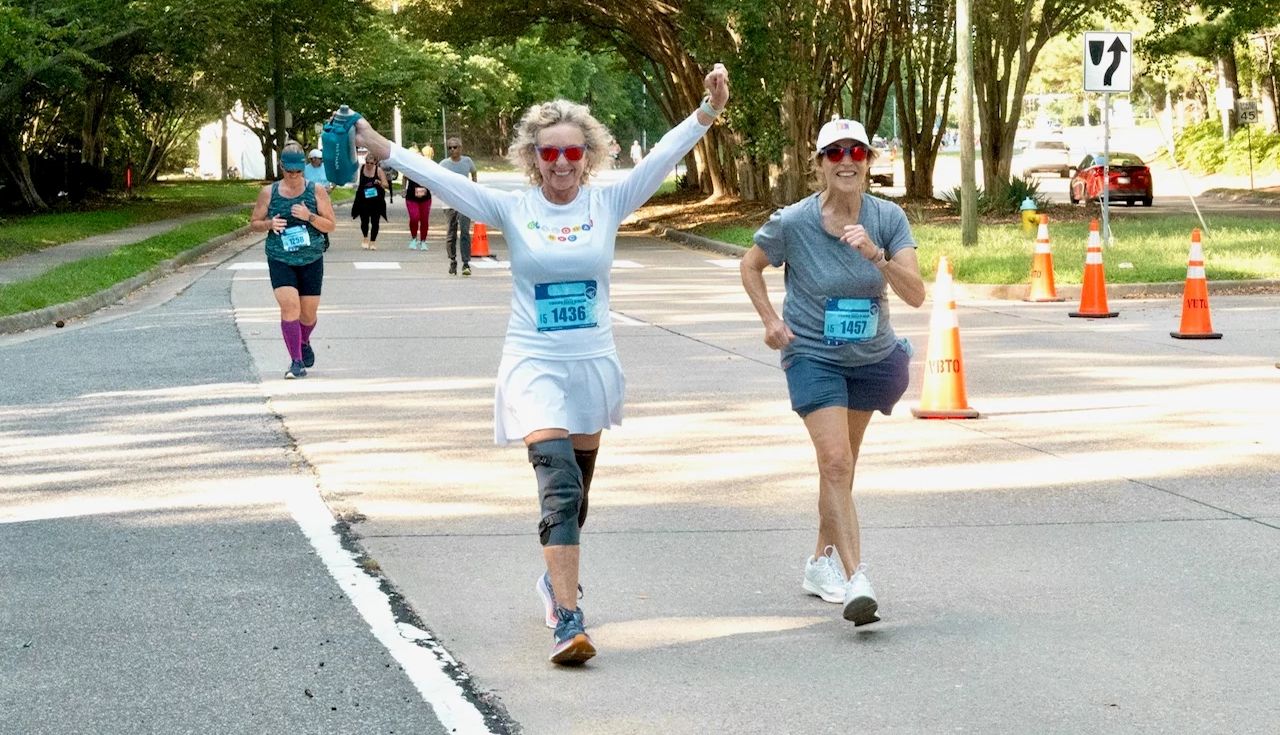AARP Hearing Center


I started running when I turned 50. On Day 1, I didn’t just lace up and sprint around the block.
I eased into it by following the run/walk/run method, a brilliant approach designed to help people of any age or ability enjoy running without injury. Created by Jeff Galloway, an Olympian and coach, his philosophy is simple: Alternate short bursts of running with walking breaks. This rhythm helped me build endurance, protect my joints and fall in love with the sport.
On a dare from my youngest daughter, I signed up for the New York City Marathon, and went on to complete 16 other marathons and countless shorter races, ranging from 5k to 10K and 10-milers. I even did one ultramarathon — 60K — to celebrate my 60th birthday.
But recently, an injury brought my running life to a screeching halt.
A stress fracture in my knee, compounded by arthritis, meant I had to stop, at least for the time being. Just like that, I went from 15 to 20 miles a week to zero. And it showed. I lost muscle, gained weight, felt sluggish, and boy oh boy was I grumpy.
That’s when I knew it was time to reassess and tweak — my go-to strategy for navigating any major life change.
And it led me to something that felt surprisingly familiar: Japanese walking, also known as interval walking training (IWT). This method of walking has been around for decades, but it’s become trendy on social media in the past year.
It’s not just health professionals who are taking notice. Japanese walking is exploding on social media platforms like TikTok and Instagram. Search hashtags like #intervalwalking, #fastslowwalk, #walkforhealth or #japanesewalking and you’ll find thousands of videos, many posted by people over age 50 who are documenting their transformations. They’re losing weight, gaining energy and rediscovering a love of movement.


As a writer and podcast host, I scour medical journals for ideas, inspiration and guests, and it was in one of these publications that I found some fascinating research about this import from Japan. When I first learned about this way of walking — alternating fast and slow walking for a specific amount of time — it clicked immediately. Why? Because I was already trained in this pattern, thanks to the Galloway program. I’d had years of experience transitioning between effort and recovery, tuning into my breathing and finding rhythm in movement.
Only now, instead of running and walking, it was fast walking and normal walking. The beauty of Japanese walking is that it gives you all the cardiovascular, muscular and metabolic benefits of a workout — without the pounding.
What is Japanese walking?
Interval walking was developed in the early 2000s by Dr. Hiroshi Nose and his team at Shinshu University in Matsumoto, Japan. Their goal was to create a safe, effective movement practice for aging adults, one that would improve health outcomes without overstraining their bodies.




































































You Might Also Like
Could You Pass the Presidential Fitness Test?
The physical challenge that tormented a generation just might be worth revisiting
Top Exercises for Knee Strength and Flexibility
Try this to strengthen the muscles that support your knees
Guide to Maintaining Strength as You Age
Tips for staying strong and independent as you age